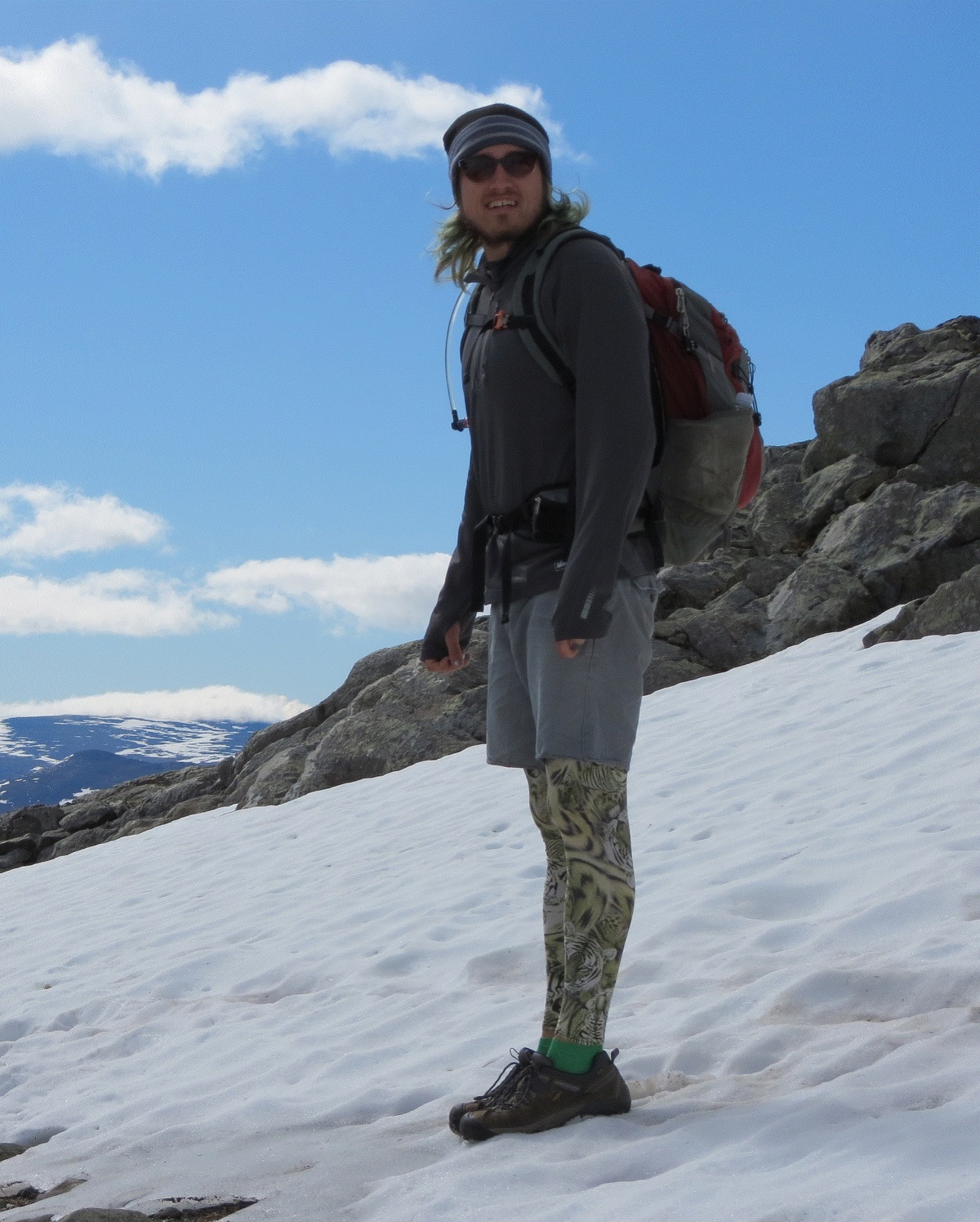| Preprints | |
| 27 | T Liu, A Morr, S Bathiany, L Blaschke, Z Qian, C Diao, T Smith, and N Boers. “The influence of data gaps and outliers on resilience indicators.” arXiv (2025). https://doi.org/10.48550/arXiv.2505.19034 |
| 2026 | |
| 26 | T Smith, A Morr, B Bookhagen and N Boers. “Predicting Instabilities in Transient Landforms and Interconnected Ecosystems.” Nature Communications (accepted 2026). https://doi.org/10.48550/arXiv.2506.23946 |
| 2025 | |
| 25 | T Smith and B Bookhagen. “Strongly Heterogeneous Surface-Water Warming Trends in High Mountain Asia.” Geophysical Research Letters (2025). https://doi.org/10.1029/2025GL119418 |
| 24 | N Boers, T Liu, S Bathiany, M Ben-Yami, L Blaschke, N Bochow, C Boulton, T Lenton, A Morr, D Nian, M Rypdal, and T Smith. “Destabilization of Earth system tipping elements.” Nature Geoscience. (2025). https://doi.org/10.1038/s41561-025-01787-0 |
| 23 | L Flores, C Nendel, B Bookhagen, J A Oviedo-Reyes, T Smith, and G Ghazaryan. “The potential of Sentinel-1 time series for large-scale assessment of maize and wheat phenology across Germany”. GIScience & Remote Sensing, 62(1) (2025). https://doi.org/10.1080/15481603.2025.2531593 |
| 22 | Y Su, C Zhang, A Cescatti, K Yu, P Ciais, T Smith, J Shang, J Carnicer, J Liu, JM Chen, J K Green, J Wu, G E Ponce-Campos, Y Zhang, Z Zuo, J Liao, J Wu, R Lafortezza, K Yan, X Yang, L Liu, J Ren, W Yuan, X Chen, C Wu, and W Zhou. “Pervasive but biome-dependent relationship between fragmentation and resilience in forests.” Nature Ecology & Evolution (2025). https://doi.org/10.1038/s41559-025-02776-7 |
| 2024 | |
| 21 | L Blaschke, D Nian, S Bathiany, M Ben-Yami, T Smith, C Boulton, and N Boers. “Spatial correlation increase in single-sensor satellite data reveals loss of Amazon rainforest resilience.” Earth’s Future, 12, e2023EF004040 (2024). https://doi.org/10.1029/2023EF004040 |
| 20 | S Bathiany, R Bastiaansen, A Bastos, L Blaschke, J Lever, S Loriani, W De Keersmaecker, W Dorigo, M Milenković, C Senf, T Smith, J Verbesselt, and N Boers. “Ecosystem Resilience Monitoring and Early Warning Using Earth Observation Data: Challenges and Outlook.” Surveys in Geophysics (2024). https://link.springer.com/article/10.1007/s10712-024-09833-z |
| 19 | T M Lenton, J F Abrams, A Bartsch, S Bathiany, C A Boulton, J E Buxton, A Conversi, A M Cunliffe, S Hebden, T Lavergne, B Poulter, A Shepherd, T Smith, D Swingedouw, R Winkelmann, and N Boers. “Remotely sensing potential climate change tipping points across scales.” Nature Communications 15, 343 (2024). https://doi.org/10.1038/s41467-023-44609-w |
| 2023 | |
| 18 | Y Yang, Q You, T Smith, R Kelly, and S Kang. “Spatiotemporal dipole variations of spring snowmelt over Eurasia.” Atmospheric Research (2023). https://doi.org/10.1016/j.atmosres.2023.107042 |
| 17 | T Smith and N Boers. “Reliability of Vegetation Resilience Estimates Depends on Biomass Density.” Nature Ecology & Evolution (2023). https://doi.org/10.1038/s41559-023-02194-7 |
| 16 | T Schmidt, T Kuester, T Smith, and M Bochow. “Potential of Optical Spaceborne Sensors for the Differentiation of Plastics in the Environment”, Remote Sensing 15(8):2020 (2023). https://doi.org/10.3390/rs15082020 |
| 15 | T Smith, R.-M. Zotta, C. A. Boulton, T. M. Lenton, W. Dorigo, and N. Boers. “Reliability of Resilience Estimation based on Multi-Instrument Time Series”, Earth System Dynamics, 14, 173–183, https://doi.org/10.5194/esd-14-173-2023, 2023. |
| 14 | T Smith and N Boers. “Global vegetation resilience linked to water availability and variability.” Nature Communications 14, 498 (2023). https://doi.org/10.1038/s41467-023-36207-7 |
| 2022 | |
| 13 | T Smith, D Traxl, and N Boers. “Empirical evidence for recent global shifts in vegetation resilience.” Nature Climate Change (2022). https://doi.org/10.1038/s41558-022-01352-2 |
| 12 | R Hering, M Hauptfleisch, M Jago, T Smith, S Kramer-Schadt, J Stiegler, and N Blaum. “Don’t stop me now: Managed fence gaps could allow migratory ungulates to track dynamic resources and reduce fence related energy loss.” Frontiers in Ecology and Evolution (2022). https://doi.org/10.3389/fevo.2022.907079 |
| 11 | F Atmani, B Bookhagen, T Smith. “Measuring Vegetation Heights and Their Seasonal Changes in the Western Namibian Savanna Using Spaceborne Lidars.” Remote Sensing 14, 2928. (2022). https://doi.org/10.3390/rs14122928 |
| 2019-2021 | |
| 10 | T Smith, A Rheinwalt, and B Bookhagen. “Topography and Climate in the Upper Indus Basin: Mapping Elevation-Snow Cover Relationships.” Science of The Total Environment, 2021, 147363, ISSN 0048-9697. https://doi.org/10.1016/j.scitotenv.2021.147363 |
| 9 | T Smith and B Bookhagen. (2020). “Climatic and Biotic Controls on Topographic Asymmetry at the Global Scale.” Journal of Geophysical Research: Earth Surface, 125, e2020JF005692. https://doi.org/10.1029/2020JF005692 |
| 8 | T Smith and B Bookhagen. “Assessing Multi-Temporal Snow-Volume Trends in High Mountain Asia From 1987 to 2016 Using High-Resolution Passive Microwave Data.” Front. Earth Sci. (2020) 8:559175. https://doi.org/10.3389/feart.2020.559175 |
| 7 | T Smith, A Rheinwalt, and B Bookhagen. “Determining the Optimal Grid Resolution for Topographic Analysis on an Airborne Lidar Dataset”, Earth Surface Dynamics 7 (2019): 475-489 https://doi.org/10.5194/esurf-7-475-2019 |
| 2013-2018 | |
| 6 | T Smith and B Bookhagen. “Using passive microwave data to understand spatio-temporal trends and dynamics in snow-water storage in High Mountain Asia”, Proc. SPIE 10788, Active and Passive Microwave Remote Sensing for Environmental Monitoring II, 1078806 (9 October 2018) https://doi.org/10.1117/12.2323827 |
| 5 | T Smith and B Bookhagen. “Changes in seasonal snow water equivalent distribution in High Mountain Asia (1987 to 2009)”, Science Advances 4 (2018): 1, https://doi.org/10.1126/sciadv.1701550 |
| 4 | T Smith, B Bookhagen, and A Rheinwalt. “Spatio-temporal Patterns of High Mountain Asia’s Snowmelt Season Identified with an Automated Snowmelt Detection Algorithm, 1987-2016”, The Cryosphere 11 (2017): 2329-2343, https://doi.org/10.5194/tc-11-2329-2017 |
| 3 | T Smith and B Bookhagen. “Assessing uncertainty and sensor biases in passive microwave data across High Mountain Asia”, Remote Sensing of Environment 181 (2016): 174-185. https://doi.org/10.1016/j.rse.2016.03.037 |
| 2 | T Smith, B Bookhagen, and F Cannon. “Improving semi-automated glacier mapping with a multi-method approach: applications in central Asia”, The Cryosphere 9.5 (2015): 1747-1759. https://doi.org/10.5194/tc-9-1747-2015 |
| 1 | W Amidon, B Bookhagen, J-P Avouac, T Smith, D Rood. “Late Pleistocene Glacial Advances in the Western Tibet Interior”, Earth and Planetary Science Letters 381 (2013): 210-221. https://doi.org/10.1016/j.epsl.2013.08.041 |
